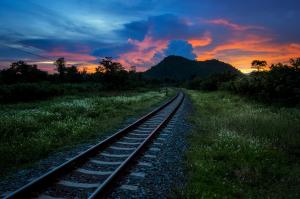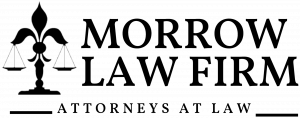
Understanding Train Crossing Accidents and Legal Recourse in Louisiana
"Train crossing accidents often involve intricate layers of responsibility, encompassing everything from proper signal operation to railway maintenance," explains Stephen M. Morrow, an attorney with a focus on workplace injury. "These cases demand a detailed analysis of contributing factors to determine liability and seek appropriate compensation for the victims."
Common Causes of Train Crossing Accidents
Train crossing accidents are often the result of multiple factors, including human error, equipment malfunction, and inadequate infrastructure. Louisiana’s high volume of railway crossings makes this an issue of significant concern for motorists and rail companies alike. Here are some of the most common causes contributing to these accidents:
Faulty or Missing Signals
Proper functioning of warning signals, including flashing lights, gates, and bells, is essential for alerting drivers of an approaching train. Faulty or missing signals can lead to confusion or delayed reaction times, putting drivers at risk. In cases where warning signals fail to activate or are altogether absent, responsibility may fall on the railway company or the party responsible for signal maintenance.
Poorly Maintained Crossings
Many crossings require ongoing maintenance to remain safe for vehicles and pedestrians. Issues such as damaged road surfaces, obstructed views due to overgrown vegetation, or worn-out signage can increase the likelihood of accidents. Poorly maintained crossings can impair visibility or create physical hazards, increasing the chance of collisions with trains. In such cases, identifying the entity responsible for maintenance is crucial for establishing liability.
Human Error
In some cases, driver behavior contributes to train crossing accidents. Distracted driving, speeding, or attempts to "beat" the train across the tracks often lead to preventable collisions. While driver behavior is a factor, it doesn’t negate the responsibility of rail companies and municipalities to provide clear warnings and properly maintained crossings.
Train Speed and Emergency Braking Systems
Trains are required to follow regulated speed limits, especially in areas with frequent crossings. Excessive speed or failure to deploy emergency brakes in time can lead to severe accidents at crossings. In some cases, poor communication between train operators and the signaling system can also delay necessary braking.
Inadequate Lighting or Poor Visibility
Many crossings are located in rural or poorly lit areas, which can make it difficult for drivers to see approaching trains or warning signals, especially at night or during adverse weather conditions. Proper lighting, clear signage, and reflective markers at crossings are essential to prevent such accidents.
Understanding these potential causes helps determine which parties may hold liability in a train crossing accident. In some cases, liability may extend to multiple entities, including railway companies, government agencies, and contractors responsible for signal operation and crossing maintenance.
Liability in Train Crossing Accidents
Determining liability in train crossing accidents can be challenging, as these cases often involve multiple entities with specific responsibilities. Liability may fall on railway companies, signal maintenance contractors, government entities, or even vehicle manufacturers if a defect played a role. A thorough investigation of the incident is essential to identify the liable party or parties accurately.
Railway Companies
Railway companies are generally responsible for maintaining their trains, tracks, and any signals at crossings. If a train operator’s error, signal malfunction, or excessive speed contributed to the accident, the railway company may be liable. Additionally, rail companies are responsible for ensuring compliance with federal and state safety regulations governing train speeds, brake systems, and emergency protocols.
Government Agencies
Government entities, often at the state or local level, may share responsibility for train crossing safety. In cases where the crossing’s condition, visibility, or signage is deemed inadequate, liability may fall on the government agency tasked with maintaining that crossing. In such situations, evidence of neglect or failure to meet established safety standards can help establish the agency’s accountability.
Signal and Maintenance Contractors
In some cases, signal maintenance and operation are contracted out to third-party companies. If faulty signals or inadequate maintenance contributed to the accident, these contractors could be held liable. Proper documentation and maintenance logs are essential evidence in such cases to establish whether maintenance protocols were followed.
Vehicle Manufacturers
In rare cases, a vehicle defect may contribute to a train crossing accident, such as brake failure or electrical issues preventing vehicle operation. If a defect is found to have played a role, the vehicle manufacturer may bear some liability for the accident.
Understanding these layers of liability is crucial for building a case that adequately reflects the specific factors contributing to the incident. With the involvement of multiple parties, liability often extends beyond a single entity, making comprehensive investigation and evidence collection essential.
Legal Recourse for Victims of Train Crossing Accidents
Victims of train crossing accidents may pursue legal recourse to recover compensation for their injuries, property damage, and other losses. The process of pursuing a claim requires a thorough investigation, including analysis of accident reports, maintenance logs, and records of any previous incidents at the crossing in question. Legal representation can assist victims in gathering evidence, navigating complex liability issues, and ensuring their rights are upheld.
Common types of evidence collected in these cases include:
Accident Reports and Witness Statements – These documents provide critical details of the incident and may offer insights into contributing factors, such as signal failure or poor visibility.
Maintenance and Inspection Logs – Maintenance records are essential in cases where improper upkeep or faulty signals contributed to the accident. If these logs reveal gaps or errors in maintenance, they can be used to support a claim against the responsible party.
Surveillance Footage – Many crossings are monitored by video surveillance, which can capture valuable footage of the incident and clarify the sequence of events.
Expert Testimony – In some cases, expert testimony on topics such as signal operation, train braking systems, or vehicle mechanics may be used to establish the specifics of the accident.
With the assistance of an attorney, victims can pursue compensation for damages, which may include medical expenses, lost wages, rehabilitation costs, pain and suffering, and property damage.
Advocating for Safer Rail Crossings
Train crossing accidents highlight the importance of safe infrastructure and responsible practices from all parties involved. Holding rail companies, contractors, and government agencies accountable encourages adherence to safety regulations and promotes more rigorous maintenance of crossings. In Louisiana, where rural and urban crossings are frequent, ensuring safety at these intersections is critical to protecting the well-being of residents.
In addition to legal action, train crossing accident cases can serve as a catalyst for improved policies and preventive measures. By enforcing accountability, the legal process supports a safer environment for all motorists, pedestrians, and rail operators.
Morgan Thomas
Rhino Digital, LLC
+1 504-875-5036
email us here
Visit us on social media:
Facebook
Distribution channels: Culture, Society & Lifestyle, Insurance Industry, Law
Legal Disclaimer:
EIN Presswire provides this news content "as is" without warranty of any kind. We do not accept any responsibility or liability for the accuracy, content, images, videos, licenses, completeness, legality, or reliability of the information contained in this article. If you have any complaints or copyright issues related to this article, kindly contact the author above.
Submit your press release

